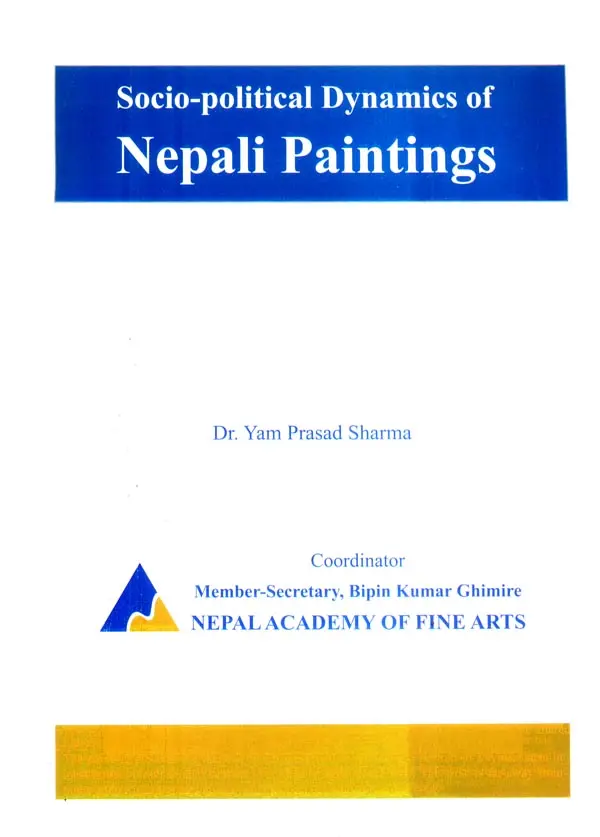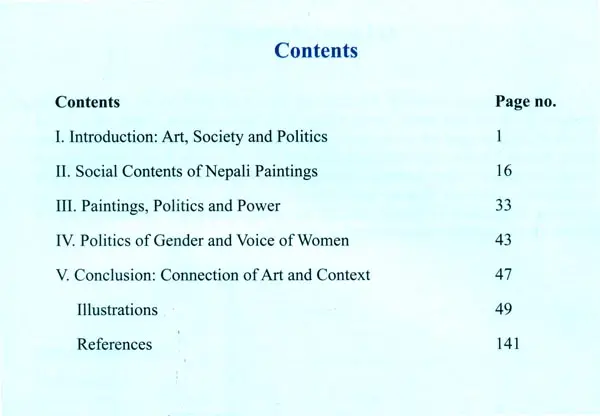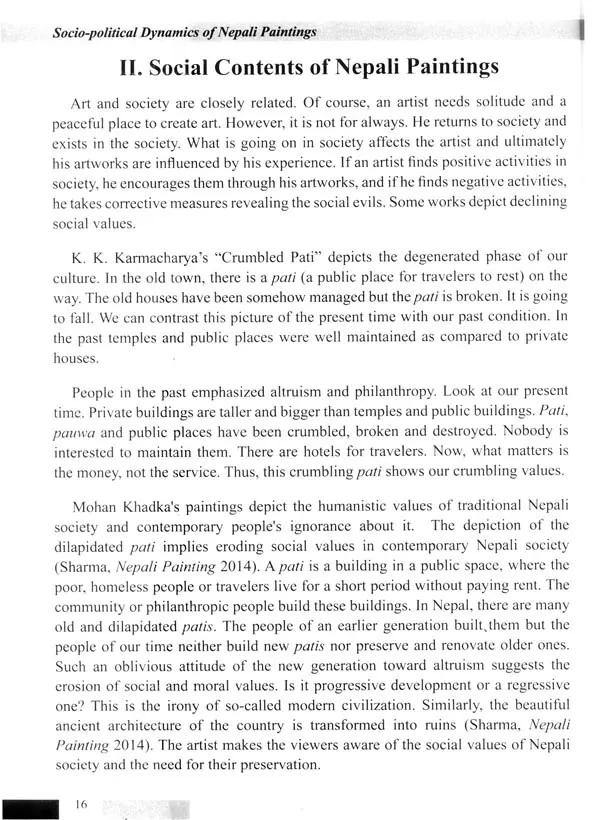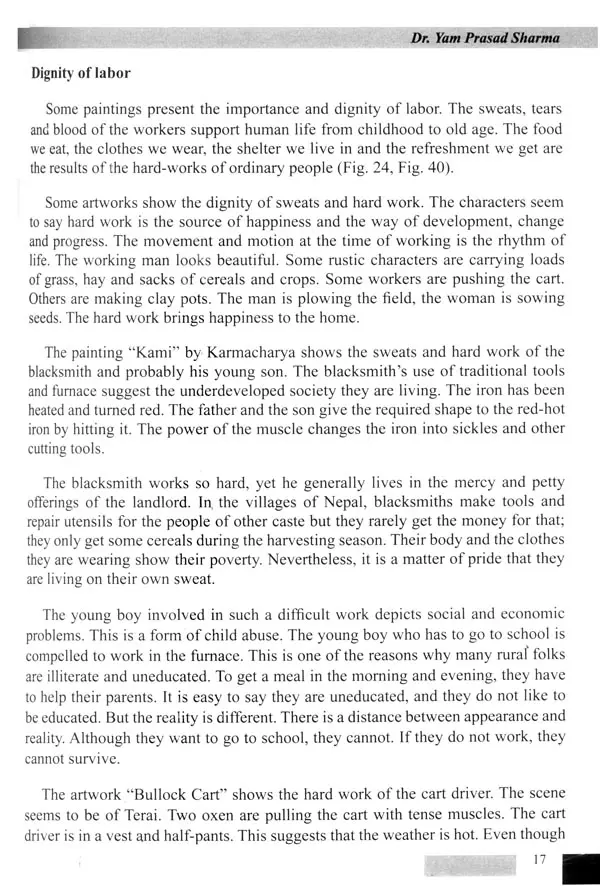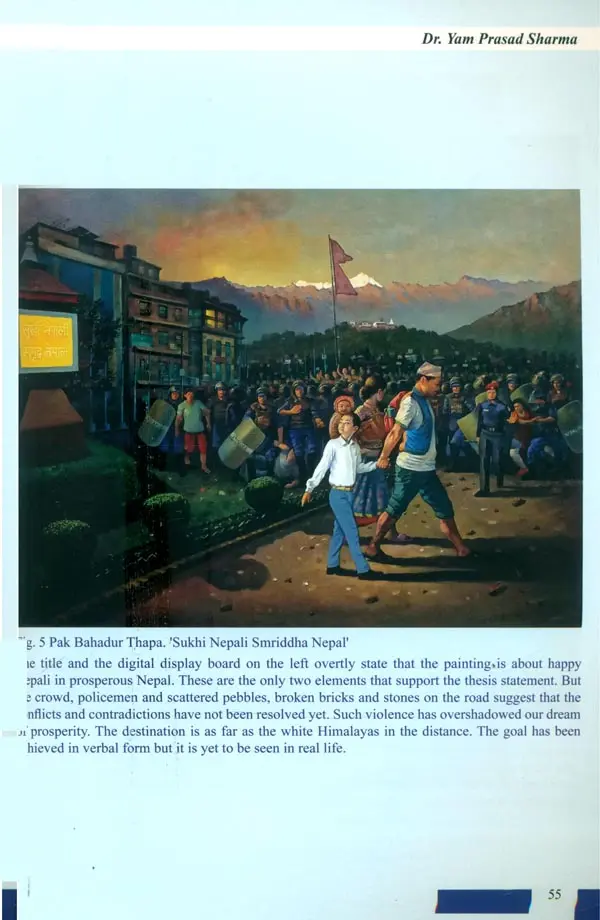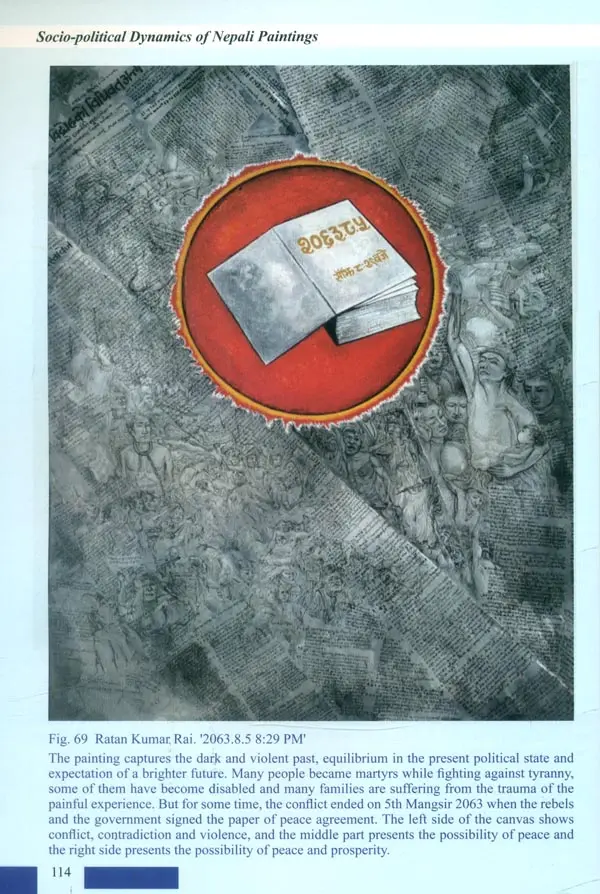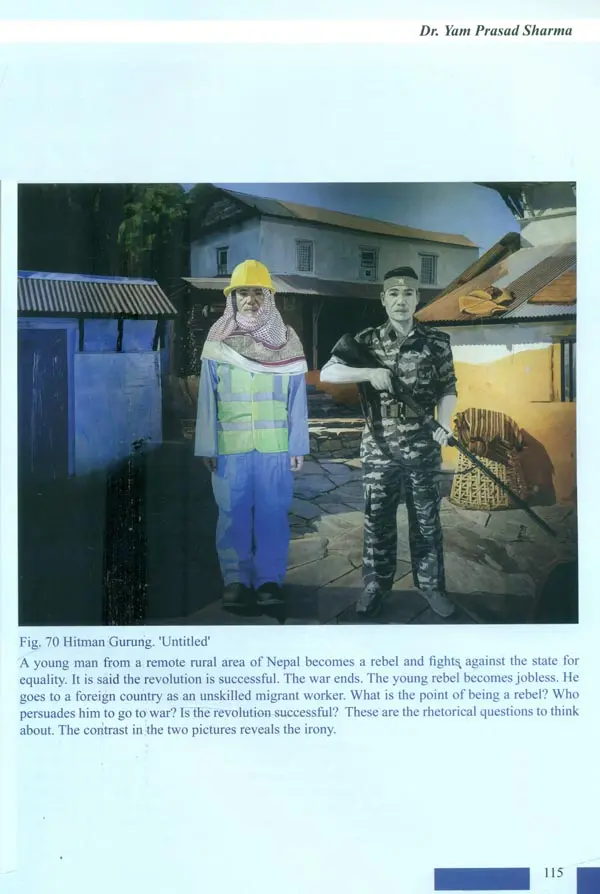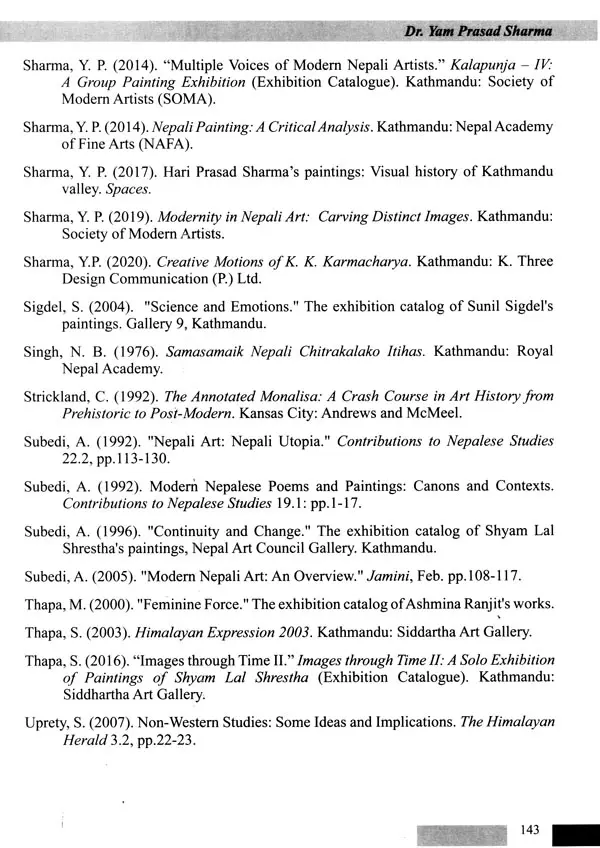
Socio-Political Dynamics of Nepali Paintings
Book Specification
| Item Code: | UAG902 |
| Author: | Yam Prasad Sharma |
| Publisher: | Nepal Academy of Fine Arts |
| Language: | English |
| Edition: | 2021 |
| ISBN: | 9789937947138 |
| Pages: | 146 (Throughout Color Illustrations) |
| Cover: | PAPERBACK |
| Other Details | 9.50 X 7.00 inch |
| Weight | 350 gm |
Book Description
After the,'end of the Rana regime in 2007 B.S., the cross flow of people increased rapidly along with artists and artworks. Then, the western techniques of impressionism,' fauvism, expressionism, cubism, Dadaism, futurism, abstractionism, and surrealism flooded into the country along with the beginning of the democratic political system. Similar changes in arts can be seen with the change in political systems like the commencement of the Panchayat system (2017 B.S.), restoration of democracy (2046 B.S.), and the establishment of the republic (2065 B.S.). The colors of paintings change according to the color of society, politics, and power. Of course, some artworks foreshadow the change and revolution, but such works are rare in the context of Nepali art. This research attempts to trace the social and political dynamics of Nepali paintings.
Social and political aspects of contemporary context have been presented in Nepali paintings across history. Some works recognizably represent the socio- political issues whereas other works present something but signify something else creating the distance between what they depict and what they mean. Nevertheless, with thorough analysis and interpretation, political undercurrents can be traced in the artworks. The paintings have been created by the existing artists in the physical space and real-time. The artworks as the physical things stand there in front of us as real as we are now. The artist presents the real world, society, events, characters, experiences, feelings, or imagination. Even abstract concepts like feelings and imagination evolves from the artists in response to real context and their experiences. In this sense, the artworks are related to the socio-political context of contemporary Nepali society in one way or other.
Early Nepali paintings like manuscript illuminations, paubha, mandala, and patachitra are magical, mystical, and religious but most of the contemporary Nepali paintings are secular presenting everyday life, social issues, and political context. There is the movement from religiosity to secularity, mythical world to real-world, mythical characters to real characters of the society, grand narratives to small and individual narratives, magical to factual, didactic to expressive, closed- form to open-ended form, fixed significance to multiple significance. In each of these aspects, society and politics have been linked overtly or covertly.
Traditional Nepali paintings
Manuscript illuminations, the earliest Nepali paintings ever existed, are paintings painted on handwritten religious texts that are related to Hindu and Buddhist myths. Miniature paintings coexist with verbal texts in the manuscripts. The vision and sexuality are presented simultaneously to motivate the readers. Paubhas are also religious paintings that have a principal deity at the center surrounded by other subsidiary deities in the periphery. Some paubhas have been created in the shape of mandalas having geometric shapes like circles and squire around the central deity.
The geometric structure is such that it leads the viewer's eyes from the periphery to the center where the divinity resides. The mandala is also used as an instrument for concentration and meditation. Patachitra is a narrative scroll painting that tells mythical stories in visual form. The dominance of religious and mythical paintings in the then society reflects the power of religion in the community. Religion was at the center of social structure.
Book's Contents and Sample Pages
